The PALS Cardiac Arrest Algorithm
Pediatric Cardiac Arrest
Short Description
This algorithm outlines the steps guiding the provider to efficiently assess and manage a child in cardiac arrest. Cardiac arrest in children is rarely a primary cardiac event.
Algorithm at a Glance
- The provider immediately recognizes cardiac arrest and begins high-quality CPR.
- The team determines whether the cardiac arrest rhythm is shockable (VF or pVT) or nonshockable (PEA or asystole).
- If the rhythm is shockable, the team administers a shock as soon as a defibrillator is available.
- If the rhythm is not shockable, the team administers epinephrine as early as possible and every 3–5 minutes after that.
- High-quality CPR continues if the child remains in cardiac arrest.
- For VF or pVT, the provider considers antiarrhythmics if defibrillation is not successful.
Goals for Management
The provider must succeed in the following goals to successfully manage children in cardiac arrest:
- Recognize the rhythms of cardiac arrest: ventricular fibrillation, ventricular tachycardia, PEA, and asystole
- Recognize the Hs and Ts as possible causes of cardiac arrest
- Appropriately intervene in cardiac arrest depending on the cardiac arrest rhythm
The Pediatric Cardiac Arrest Algorithm
This algorithm outlines the steps for assessing and managing children presenting with cardiac arrest symptoms.
Pediatric Cardiac Arrest Algorithm
Box 0: Ensure Scene Safety
The provider surveys the scene to ensure that it is safe for rescuers and the child. If not, the provider carefully moves the child to a safe environment.
Box 1: Initiate CPR
The provider immediately initiates high-quality CPR. The team determines if the rhythm is shockable.
If shockable, the team proceeds to Box 2.
If not shockable, the team proceeds to Box 9.
Box 2: Shockable Rhythms
The shockable rhythms are ventricular fibrillation and pulseless ventricular tachycardia.

Ventricular fibrillation is a shockable rhythm.
Related Video – ECG Rhythm Review – Ventricular Fibrillation
Related Video – ECG Rhythm Review – Ventricular Tachycardia
Box 3: Administer Shock
The initial shock is 2 J/kg.
Box 4: Provide High-Quality CPR for 2 Minutes
High-quality CPR includes:
- Rate 100–120 bpm
- Depth ≥ one-third the anteroposterior diameter of the chest
- Complete chest recoil
- Minimal interruptions
- Rotating compressors every 2 minutes or sooner if required
While CPR is in progress, another member of the team simultaneously obtains IV or IO access.
After 2 minutes, the team stops to determine if the child is still in a shockable rhythm.
If yes, the team proceeds to Box 5.
If no, the team proceeds to Box 12.
Box 5: Administer Shock
The second shock is given at a dose of 4 J/kg.
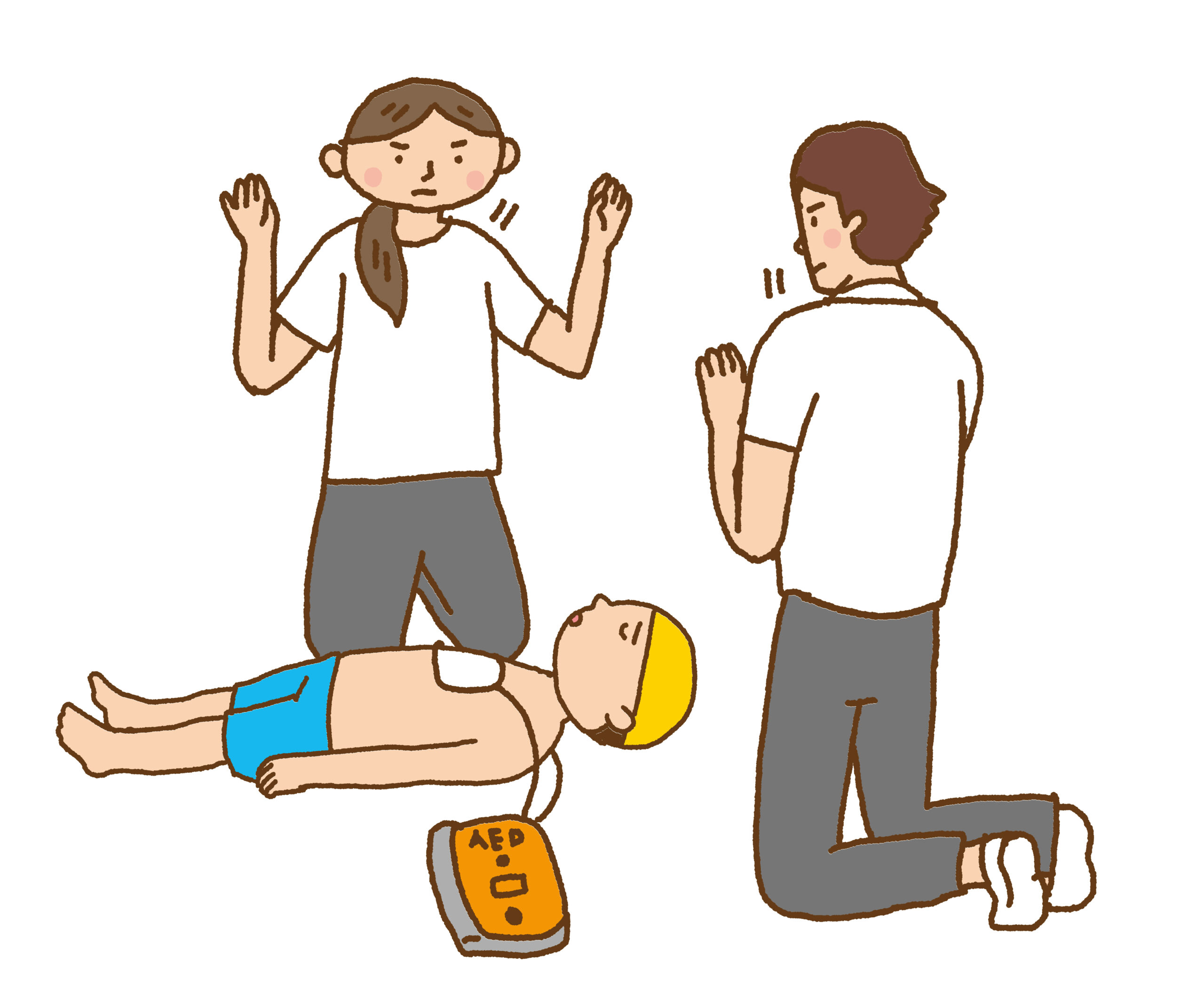
Rescuers administer shocks per the algorithm directives.
Box 6: Resume CPR for 2 Minutes
Simultaneously, another team member administers epinephrine every 3–5 minutes.
The team leader considers the insertion of an advanced airway.
After 2 minutes, the team stops to determine if the child is still in a shockable rhythm.
If yes, the team proceeds to Box 7.
If no, the team proceeds to Box 12.
Box 7: Administer Shock
After the second shock (Box 5), all subsequent shocks are at 4 J/kg or higher to a maximum of 10 J/kg or an adult energy dose.
Box 8: Resume CPR for 2 Minutes
The team administers amiodarone or lidocaine.
The team assesses for and treats possible underlying causes (Hs and Ts).
The team continues with a rotation of shocks and CPR until the rhythm is not shockable.
Related Video – Introduction to the Hs and Ts
Box 9: Nonshockable Rhythms
If the child’s rhythm is identified as asystole or PEA, the team starts an IV, administers epinephrine, and proceeds to Box 10.
Box 10: High-quality CPR for 2 Minutes.
A team member obtains IO/IV access and administers epinephrine if not already done.
The team considers an advanced airway and waveform capnography.
After 2 minutes of high-quality CPR, the team evaluates the rhythm.
If shockable, the team proceeds to Box 5 or 7.
If not shockable, the team proceeds to Box 11.
Box 11: Resume High-Quality CPR for 2 Minutes
The team leader considers and treats any reversible causes (Hs and Ts).
After 2 minutes, the team evaluates the rhythm.
If shockable, the team proceeds to Box 5 or 7.
If not shockable, the team proceeds to Box 12.
Box 12: Assess Nonshockable Rhythm
If the rhythm is asystole or PEA, the team returns to Box 11.
Related Video – Hs and Ts – Treating Asystole
Related Video – What is PEA?
If the rhythm is organized, the provider assesses for a pulse.
The team should consider the appropriateness of continuing resuscitation.
If there is a pulse, the team proceeds to the Post-Cardiac Arrest algorithm.
Related Video – Immediate Post-Cardiac Arrest Care
Understanding the Pediatric Cardiac Arrest Algorithm for VF, pVT, Asystole, and PEA
The PALS cardiac arrest algorithm guides the provider in the proper assessment and management of the infant or child in cardiac arrest who has been unresponsive to the initial BLS interventions. This algorithm emphasizes uninterrupted CPR, rapid defibrillation, and medical therapy when appropriate.
The steps in this algorithm should be performed simultaneously with well-coordinated actions by a high-performance PALS team. Assessment and interventions take place in between 2-minute periods of uninterrupted high-quality CPR.
If the child is in the intensive care unit, team members may have the luxury of monitoring physiologic parameters such as end-tidal carbon dioxide (ETCO2). ETCO2 can give the resuscitation team an idea of the effectiveness and quality of chest compressions. An ETCO2 < 10–15 mm Hg indicates inadequate cardiac output and a need to improve the quality of chest compressions.
Chest compression-induced stroke volume and cardiac output can be monitored via the waveform produced by an indwelling arterial catheter. Poor waveforms are produced if CPR is inadequate. The compressor should adjust hand-positioning, depth of compressions, and compression rate. ETCO2 and arterial waveforms are also tools to monitor for the return of spontaneous circulation (ROSC).
The PALS Cardiac Arrest algorithm identifies two pathways for cardiac arrest: shockable cardiac arrest (located on the left side) and nonshockable cardiac arrest (located on the right).
When a child becomes unresponsive, demonstrates abnormal breathing or apnea, and has no palpable pulse, the PALS provider activates the emergency response system. The rescuer sends for a defibrillator and starts CPR, beginning with high-quality chest compressions. Once a defibrillator is available, another team member attaches the pads to the patient. When the defibrillator is ready, the patient’s rhythm is assessed to determine if the rhythm is shockable or nonshockable.
Once help arrives, oxygen supplementation and positive-pressure ventilation are begun. Breaths are delivered every 2–3 seconds via a bag-mask with a compression-to-ventilation ratio of 15:2 when more than one rescuer is present.
Related Video – Understanding Bag Valve Mask Usage During CPR
Shockable Rhythms – VF and pVT
If the ECG monitor displays a shockable rhythm such as a VF or pVT, chest compressions are continued while the defibrillator charges. Once ready, the team delivers one shock. The time between stopping compressions and delivering the shock should be ≤ 10 seconds. The faster the shock is given after the last compression, the higher the success rate for conversion of the arrhythmia to sinus rhythm.
Once the team delivers the shock, they immediately resume high-quality CPR for 2 minutes, starting with chest compressions. The team then reassesses the rhythm after 2 minutes.
Optimal Energy Dose
An initial dose of 2 J/kg is used when using a manual defibrillator. The dose is increased to 4 J/kg for the second shock. If the arrhythmia persists after two shocks, all subsequent shock doses should be between 4 J/kg and 10 J/kg.
The maximum adult dose should not be exceeded for a pediatric patient. If you are using an AED, it should be equipped with a pediatric dose attenuator.
Key Takeaway
The optimal initial dose for a manual defibrillator is 2 J/kg.
Pad or Paddle Placement
Self-adhesive pads rather than defibrillator paddles are preferred when defibrillating pediatric patients. Pads can be applied quickly during chest compressions and also prevent arcing. Paddles require the use of a conducting gel between the paddles and the patient’s chest to reduce transthoracic impedance. Alcohol pads have been known to cause chest burns and are a fire hazard, so they should not be used.
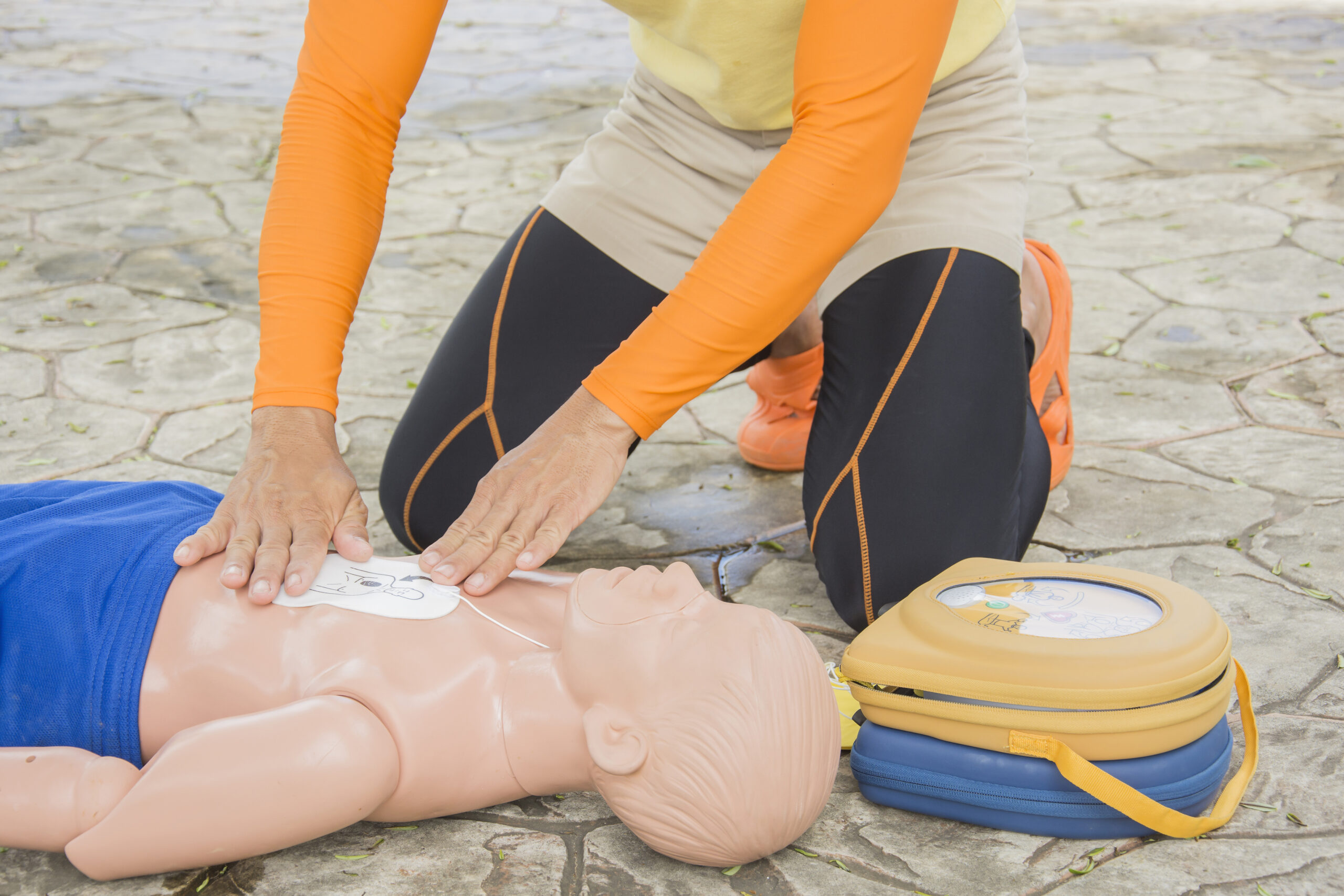
Proper AED Placement
Adult paddles are approximately 8–13 cm in size and are preferred for patients > 10 kg or > 1 year of age. Smaller pediatric paddles are about 4.5 cm in size and are preferred for infants < 10 kg.
Pads or paddles are applied in such a way that the heart is “sandwiched” between them. A pad placement diagram is typically present on the device. The sternal paddle typically goes on the right upper side of the chest just below the right clavicle. The apex paddle is placed just to the left of the nipple in the anterior axillary line directly over the heart.
The pads must not touch each other and should be at least 3 cm apart. Pressing firmly on the pads ensures they make good contact with the skin. The team should place self-adhesive pads in the anterior-posterior position, with one pad on the back and the other over the patient’s heart. This placement may be necessary when the pads are too large or the patient has an implanted defibrillator.
Clearing the Patient Before Defibrillation
Clearing the patient avoids inadvertently shocking the team members. The team member operating the defibrillator warns the team that a shock is ready to be delivered and directs everyone to stand clear. Each team member takes care to be sure that they are not touching the patient, stretcher, or any other equipment on the bed.
The staff member operating the defibrillator visualizes the area around the patient and the resuscitation team and ensures no oxygen flow is directed at the child’s chest. Clearing the patient should take < 5 seconds. A loud warning chant such as “I’m clear, you’re clear, we’re all clear” is recommended.
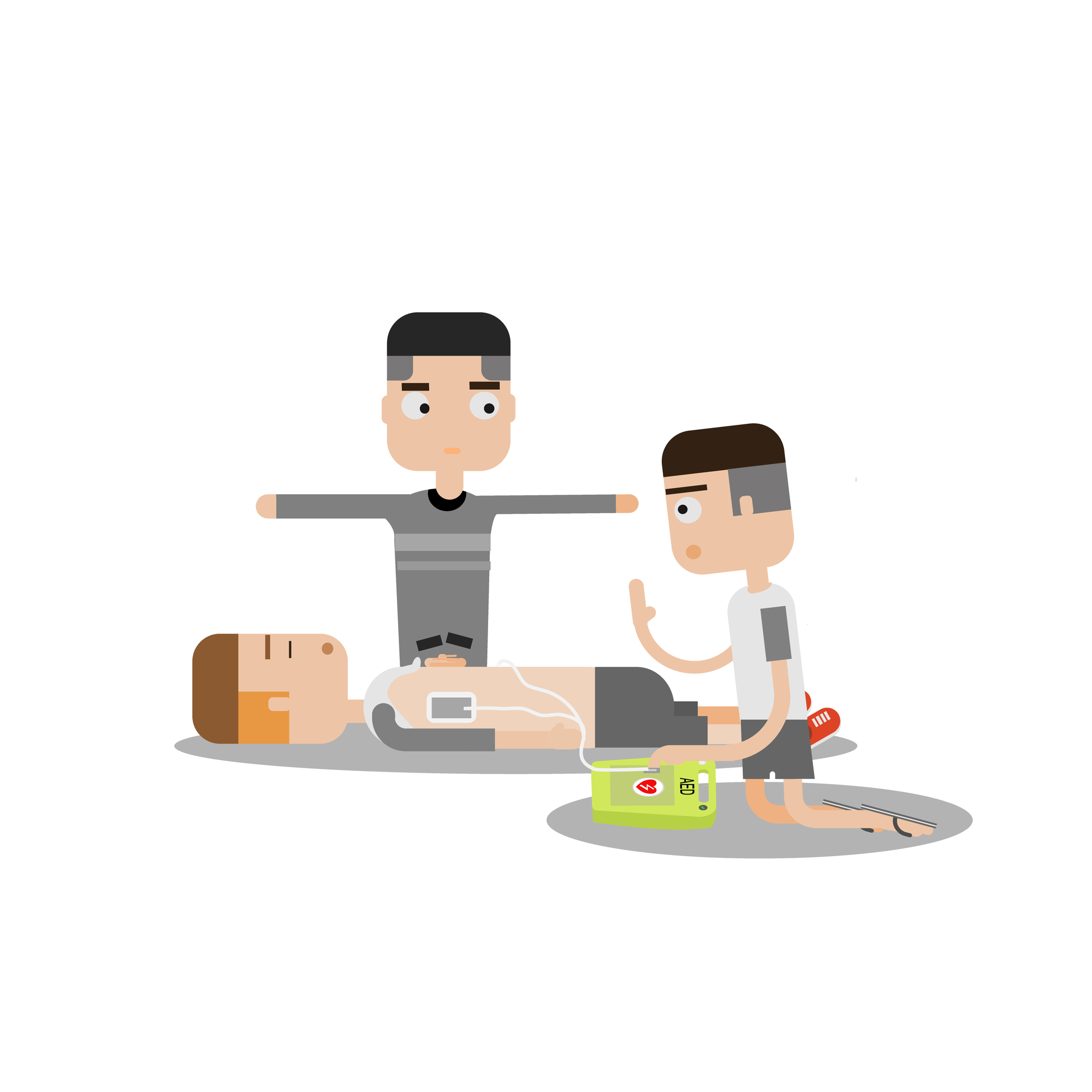
Team members should stand clear prior to shock delivery.
Resuming High-Quality CPR
CPR resumes immediately after a shock has been delivered and continues for 2 minutes. This is an excellent time to establish vascular access and draw up cardiac arrest medications. The defibrillator can also be set up for a subsequent shock if it is needed after the next rhythm check.
After 2 minutes of CPR, a rhythm check is made. The chest compressor should switch roles with another team member at this checkpoint. The rhythm check should last < 10 seconds. If the rhythm is shockable, the team defibrillates and immediately resumes CPR.
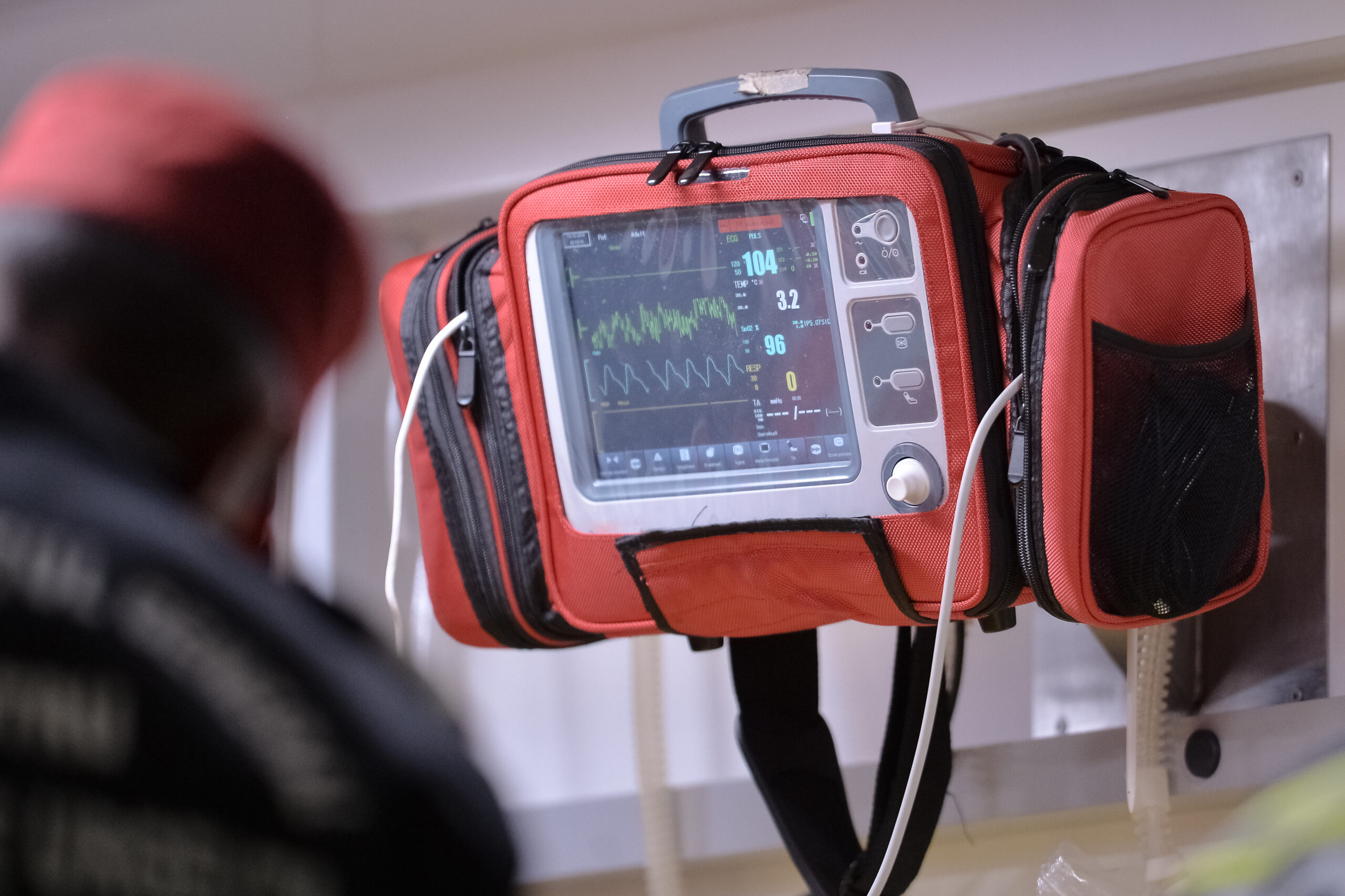
Portable Cardiac Monitor
Any time the cardiac arrest arrhythmia converts into a nonshockable, organized rhythm, the patient should be assessed for a palpable pulse and ROSC.
When the rhythm remains unorganized, the team immediately resumes high-quality CPR, beginning with chest compressions, and prepares to deliver a shock. Pulse checks are unnecessary unless there is an organized rhythm or other modalities indicate good perfusion, such as adequate ETCO2 or the presence of arterial waveforms.
If PEA or asystole is apparent at the time of the rhythm check, the team immediately resumes high-quality CPR and proceeds to the right side of the algorithm. Any time the presence of a pulse is doubted during a pulse check, the team immediately resumes high-quality CPR. Chest compressions are safe to perform even if a spontaneous rhythm and weak pulse are present.
Epinephrine Administration
If the patient is still in cardiac arrest and VF or pVT persists, epinephrine should be delivered via the IV or IO route while performing chest compressions. It should be given within the first 5 minutes of CPR at a dose of 0.01 mg/kg (0.1 mL/kg) followed by a 5 mL normal saline flush. The provider may elevate the limb with the IV or IO line to promote distribution to the central circulation. Epinephrine is indicated every 3–5 minutes in cardiac arrest.
The endotracheal dose of epinephrine is 0.1 mg/kg (0.1 mL/kg) given as a bolus directly into the endotracheal tube along with a 5 mL normal saline flush. Five positive-pressure ventilations are given following an endotracheal tube dose of epinephrine. Chest compressions must be stopped during drug delivery using the ET tube route.
Insertion of an Advanced Airway
The team leader decides if it is appropriate or necessary to intubate the patient. The leader must evaluate the risks and benefits of an advanced airway because intubation interrupts chest compressions. The team ensures that the necessary instruments for intubation are available and in working order.
2020 AHA Update: Cuffed endotracheal tubes are preferred when placing an ET tube during cardiac arrest.
When an advanced airway is in place, ventilations are still provided at a rate of one breath every 2–3 seconds (20–30 breaths per minute). The compressor performs chest compressions at a rate of 100–120 per minute. When an advanced airway is in place, compressions and breaths are not synchronized.
Antiarrhythmic Medications
Antiarrhythmic medications such as amiodaroneamiodarone or lidocaine are indicated if VF or pVT persists after the third shock. Magnesium sulfate is the drug of choice if the rhythm suggests torsades des pointes. The dose of these medications is listed in the Medications for Cardiac Arrest table.
Summary of the VF/pVT Sequence
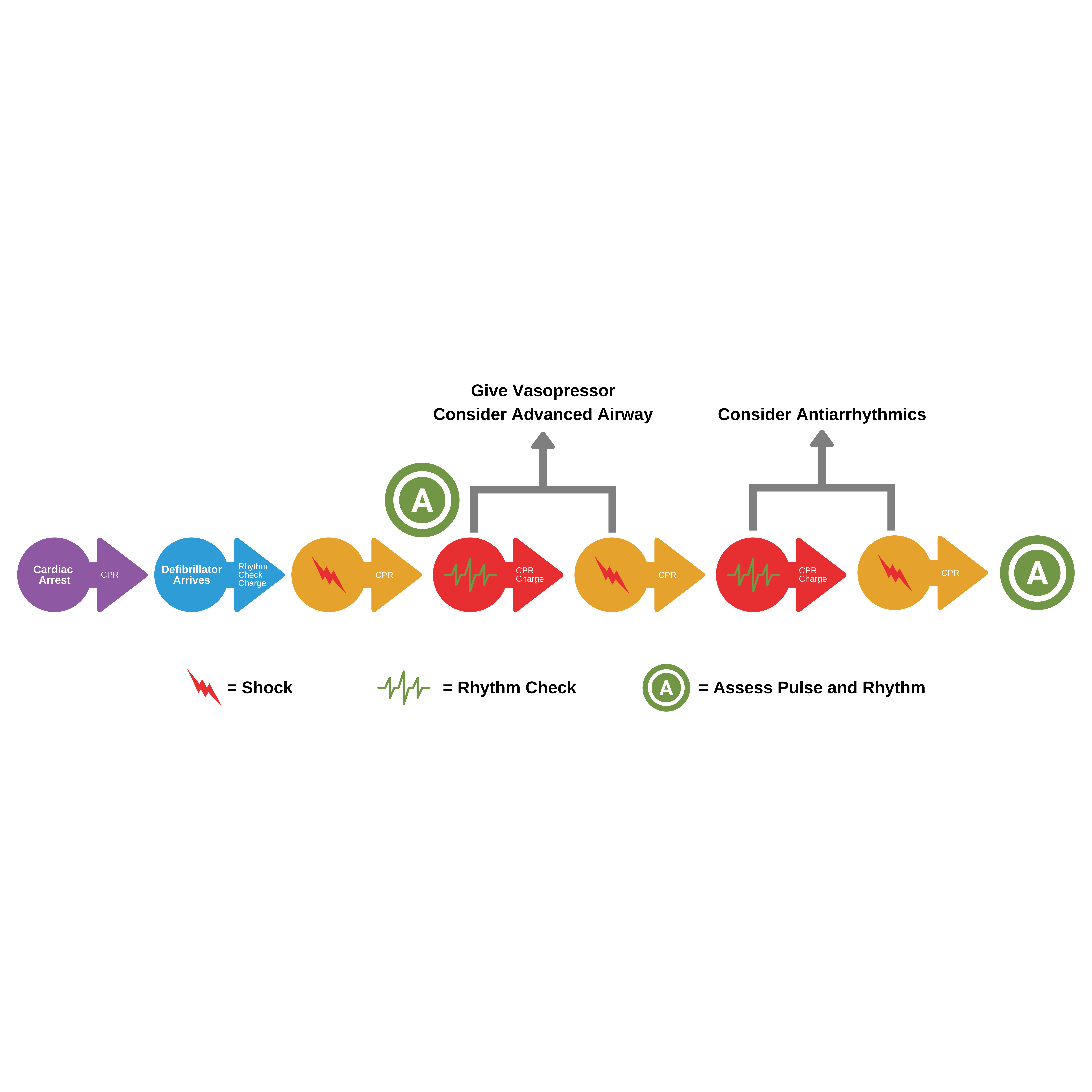
VF/pVT Sequence
Nonshockable Rhythms – Asystole and PEA
When a cardiac arrest is due to a nonshockable rhythm, the ECG tracing will likely show PEA or asystole. The team now follows the right side of the PALS Cardiac Arrest algorithm.
During resuscitation, the rhythm of a hospitalized child converts from a nonshockable rhythm to a shockable rhythm 25% of the time. Therefore, the team must be ready to return to the left side of the algorithm.
Key Takeaway
The team should focus on minimal interruptions during high-quality CPR. Interruptions must be limited to < 10 seconds.
Epinephrine With Nonshockable Rhythms
PEA and asystole are treated by performing high-quality CPR and administering cardiac arrest drugs, particularly epinephrine. While performing high-quality CPR, vascular access should be obtained as quickly as possible. IV access is preferred, but if placement is not successful, the team should pursue IO access.
As soon as vascular access is secured, the team delivers epinephrine. Giving epinephrine while performing chest compressions enhances drug circulation. The provider may also elevate the limb where the IV or IO access is located. Epinephrine should be given within 5 minutes of starting CPR and every 3–5 minutes until ROSC is achieved. There is no maximum total dose for epinephrine.
After 2 minutes of CPR and epinephrine administration, the team performs a rhythm check. If the provider observes a shockable rhythm, the team proceeds to the left side of the algorithm. If a nonshockable rhythm persists and there is still no central pulse, CPR immediately resumes beginning with chest compressions.
The team considers the reversible causes of cardiac arrest. The team leader recalls the Hs and Ts and attempts to diagnose the problem and implement the proper interventions.